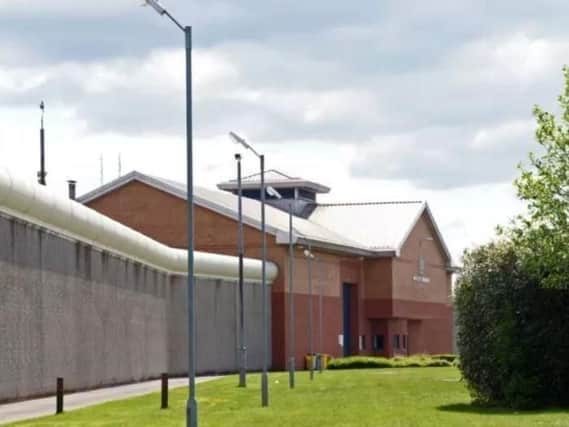Prisoners forced to share one person cells at Doncaster Prison


The latest Ministry of Justice figures show that 1,087 prisoners were crammed into just 738 spaces at the prison in July.
Campaigners say that the unchecked rise of the prison population is responsible for the huge increase in assaults on staff and other inmates, culminating in the Government taking over HMP Birmingham from its contractor, G4S, after a damning inspection report.
Advertisement
Hide AdAdvertisement
Hide AdOne of the Government's first actions was to move hundreds of inmates to other jails, reducing the overcrowding. According to July's figures, Doncaster Prison is more overcrowded than Birmingham.
The Prison Service measures its own capacity in terms of Certified Normal Accommodation - the number of prisoners it says it can accommodate in the "good, decent standard of accommodation that the service aspires to provide all prisoners".
However, with the majority of prisons overcrowded across England and Wales, it also has a separate measure called Operational Capacity. This is the maximum number of prisoners the Prison Service says each institution can safely handle while maintaining control and security.
In July, Doncaster's population stood at 95 percent of the Operational Capacity.
Advertisement
Hide AdAdvertisement
Hide AdPrisons contain a number of one and two-person cells. In overcrowded prisons, more inmates will be put in cells than they were originally designed to hold.
Annual figures, published by the Prison Service in July, show the extent of the problem. From April 2017 to March 2018, 65 percent of prisoners in Doncaster Prison were in overcrowded cells, 734 inmates on average.
Prison Reform Trust director, Peter Dawson, said: “Overcrowding isn’t simply a case of being forced to share a confined space for up to 23 hours a day where you must eat, sleep and go to the toilet.
“It directly undermines all the basics of a decent prison system, including work, safety and rehabilitation.
Advertisement
Hide AdAdvertisement
Hide Ad“No government has succeeded in building its way out of overcrowding. So we need a fundamental rethink about who we send to prison and for how long.”
There has been a renewed focus on prison policy after the Government took control of HMP Birmingham.
A shocking inspection found inmates used alcohol, drugs and violence with impunity, while the corridors were covered with cockroaches, blood and vomit.
Chief inspector of prisons, Peter Clarke, said it was “some of the most disturbing evidence” inspectors have seen in any prison.
Advertisement
Hide AdAdvertisement
Hide AdAcross the country, assaults have more than doubled in prisons over the last five years, and cases of self-harm have increased by 93 percent.
Andrew Neilson, director of campaigns at the Howard League for Penal Reform, said: “The fact that Birmingham prison is seeing its population reduced by 300 to help enable the government to improve conditions there is a tacit admission that prison overcrowding plays a key part in why our prison system fails more generally.
“Cramming more people into prisons than they were designed to hold is a recipe for violence, drug abuse and mental distress.
“Bold action is needed to reduce the number of people behind bars and ease the pressure on other prisons.”
Advertisement
Hide AdAdvertisement
Hide AdA Prison Service spokesman said: "All prisons in England and Wales are within their operational capacity which means they are safe for inmates.
"Nonetheless, reducing crowding is a central aim of our modernisation of the prison estate.
"That is why we have committed to delivering up to 10,000 new prison places across the country, and only last month announced that two new prisons would be built at Wellingborough and Glen Parva."